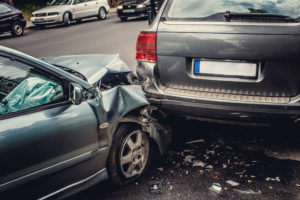A six-year-old was killed when her mother lost control of the car in icy conditions. Investigators believe the improper seat belt and booster seat use contributed to the fatality. Although there was a booster seat in the vehicle, the highway patrol believed that it was inadequate, even if it were being used at the time of the accident.
A good car seat is an important investment in the safety of your child. Section 4511.81 of the Ohio Revised Code sets forth the safety restraints required for children. A child who is less than four years old or under 40 pounds must use a car seat, and a child who is less than eight years old or under four feet nine inches in height must use a booster seat. There are narrow exceptions for children riding in taxis or ambulances and other public safety vehicles.
Choose a Car Seat
Children of different sizes have very different needs when it comes to car seats. You will need to start with a rear-facing car seat for infants and young children. In a car accident, head injuries are the predominant type of injury suffered by children, and infants are extra sensitive to damage to their still-developing skull. Infants need a great deal of support for their head and neck, and a rear-facing seat allows the forces of a crash to diffuse across the shell of the car seat, rather than throwing your delicate passenger against the harness.
Children should continue to use the rear-facing seat until they exceed the model’s weight maximums, usually set between 22 and 45 pounds. Experts recommend keeping your child in a rear facing seat as long as possible, as that is the safest way for them to travel. Often parents worry that the limited leg room may result in broken bones in the event of a crash, but a rear-facing car seat actually better at protecting your child’s limbs than a forward-facing one. More importantly, it also provides better protection for your child’s head and neck.
Once your child is too big for a rear-facing seat, you can move on to a forward-facing model. There are “convertible” models that can be installed in different configurations, most commonly allowing parents to switch a rear-facing seat into a forward-facing seat.
Children who have outgrown their forward-facing car seats are still too small for regular seats and seat belts. Seat belts work best when they fit right: the lap belt should rest across the hips and the shoulder belt should cross the middle of your collar bone. These areas have the bone structure best able to withstand the forces of a car crash throwing the occupant against the belts. If the seat belts do not fit correctly, they often cross areas of delicate internal organs, creating a high risk of internal injuries if the car is in a crash. A booster seat is crucial for making sure that your child can sit securely in the car and be best protected if they are in an accident.
A car seat suffers wear and tear and general materials degradation, so old car seats do not protect your child as well as a recently manufactured model. Although second-hand car seats may be much cheaper, you don’t know what it has been through, and not all damage may be visible. You should never continue using a car seat once it has been through a moderate or severe crash, even if no child was in the car seat at the time of the accident. A minor crash, however, should not damage your car seat enough to warrant a replacement.
A Minor Crash Is One in Which:
- The vehicle was able to be driven away from the accident;
- The door nearest to the car seat was undamaged;
- None of the occupants suffered injuries;
- Air bags did not deploy; and
- The car seat was not visibly damaged.
All of these criteria must be met, otherwise you should replace the car seat. Check with your insurance company first to see if they will cover the costs. Often they will allow you to purchase a new one right away and then submit the receipt for reimbursement so that your child is protected as soon as possible.
All car seats must meet federal safety standards, but they differ widely on ease of use and how they fit certain car models. Frustratingly, not all car seats fit properly in all cars due to the cushion shapes or seat belt placement. In order for the car seat to protect your child, the installation angle and fit must be precise. Some stores may offer you an opportunity to do a test installation to see if a particular model is suitable for your vehicle. If you purchase your car seat online without first confirming that it will fit in your car, make sure that there is a favorable return policy.
You should also check to see if your car seat model has a recall notice. The National Highway Traffic Safety Administration maintains a list of recalls for car seats issued within the last decade. But rather than check the database regularly, you can spend a moment to register your car seat and enroll to stay updated on important safety notices and recalls.
Installing the Car Seat
Once you have purchased a car seat, carefully read the manual and follow the instructions closely. If you have any concerns about the seat or encounter any difficulty installing it, or even if you have no trouble at all, you should consider having a certified inspector teach you how to install the seat. Car seat inspection stations are located across the state, and often offer their services free of charge. Investing the time to have an expert help you install the car seat can be life-saving to your child. A NHTSA study on car and booster seat use found that misuse plagued 46 percent of all installations.
Misuse by seat type:
- Rear-facing only: 49 percent
- Rear-facing convertible: 44 percent
- Forward-facing: 61 percent
- Backless booster: 24 percent
- High-back booster: 16 percent
When it comes to your child’s safety, it is worthwhile to get expert help to make sure your car seat is installed and used.
If Your Child Has Been Injured in an Auto Accident, Contact Us
The attorneys at the Ohio Car Accident Lawyers are adept at handling the aftermath of devastating auto accidents. Especially when a young child has been injured, your family needs the best legal representation it can get, and our experienced car accident lawyers in Columbus, OH are here to help. Contact us for a free consultation right away.





